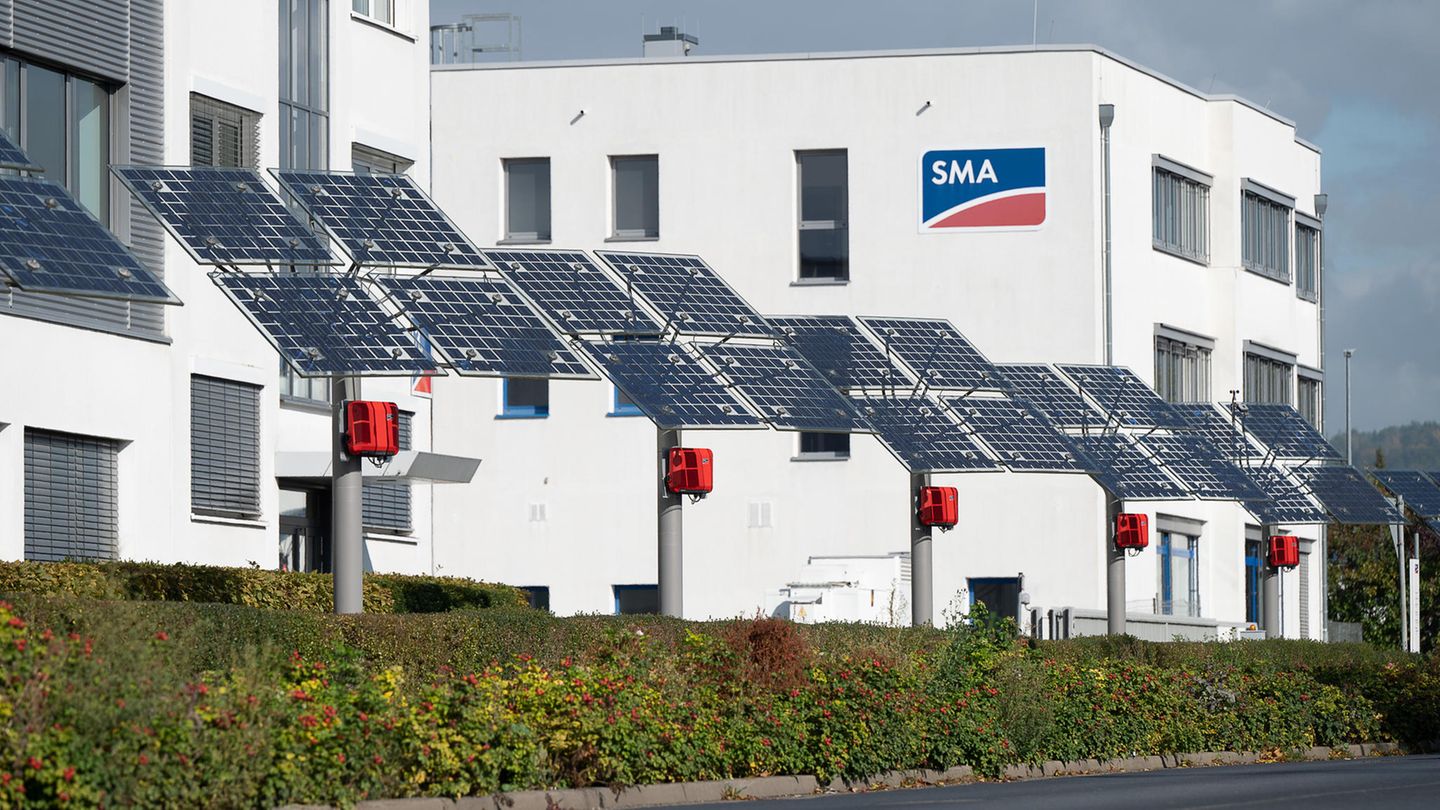podcast
The solar industry is on the upswing, also in Germany. The Hessian solar technology group SMA Solar is even building a new factory in Hesse. SMA boss Jürgen Reinert is optimistic that Germany can quadruple its solar park.
It was long declared dead, solar energy in Germany – but the situation in the industry has changed for some time. Lower costs, greater awareness of climate change and ambitious political expansion targets have spurred the industry on. The energy crisis, exacerbated by Russia’s attack on Ukraine, has added momentum. “Our customers and employees say: They have not experienced anything like this in the past ten years”, reported Jürgen Reinert, head of SMA Solar. The industry experiences one “unprecedented boom”.
There were years before, between 2005 and 2010, when companies like SMA Solar only went up, in some years sales doubled. The company, founded in Kassel in 1981, was the world market leader for inverters, a central control component for photovoltaic systems. Sales peaked at 1.9 billion euros. However, due to strong competition from China and falling subsidies, the German solar industry went downhill. Q-Cells, Solarworld, Conergy, which conquered the world market after the turn of the millennium, went bankrupt or were swallowed up. Thousands of jobs disappeared. SMA also had to make massive job cuts in 2015, around half of the workforce in Germany, and sales halved.
“Solar industry 90 percent dependent on China”
Last year, SMA Solar generated sales of 984 million euros with 3,500 employees. The high demand is not yet reflected in all figures, even if the order books in Kassel are full. “We could produce significantly two to three times as much”, according to Reinert. But one “is still at the level of the last two years and is therefore only just profitable”. SMA now sees itself as a system provider that sells complete solar solutions. This conversion costs time, the price pressure remains high in the meantime. In order to give the German photovoltaics industry a boost, said Reinert, it takes it “a lever”.
For further growth, the solar technology group is investing at its location in the northern Hessian Niestetal – SMA is building a new factory. This means that production capacity can be almost doubled by 2024. The start of construction is planned for the end of the year, 200 jobs will be created. With the investment, SMA Solar wants to secure supply chains and gain greater independence. “We are currently talking very heavily about dependency on Russian gas and oil”said Reinert. “However, the solar industry in Europe is 90 percent dependent on China.”
The traffic light coalition had announced ambitious expansion goals for renewable energies at the start – and sharpened them again in the spring. Installed capacity is expected to quadruple by 2030, from 54 to around 215 gigawatts. Experts estimate that up to 15 billion euros per year could flow into the market. This is a boost for the industry: for manufacturers of solar cells and modules, project developers and system operators, but also craftsmen. Other manufacturers such as Meyer Burger are also investing in Bitterfeld and Freiberg in Saxony.
Around five gigawatts (GW) are currently being added each year, and Germany has to come up with around 20 GW. Is such a large expansion even possible? SMA boss Reinert is optimistic. Such a ramp-up “basically no problem”. “Photovoltaic is easy to install.” There are of course hurdles such as training installers, availability of resources and fast approval processes. But technologically it is feasible. The industry has been in one place since the start of the traffic light government “much better dialogue” – which was reinforced by Russia’s war. The government listens, is pragmatic and solution-oriented.
Listen ,
- The advice Jürgen Reinert gives to acquaintances and friends who want to install a solar system
- What Germany can learn from Sweden – where Reinert lived for many years
- How artificial intelligence can control our photovoltaic systems and charging stations for cars in the future
All episodes can be found directly at , or or via .
Source: Stern
Jane Stock is a technology author, who has written for 24 Hours World. She writes about the latest in technology news and trends, and is always on the lookout for new and innovative ways to improve his audience’s experience.




